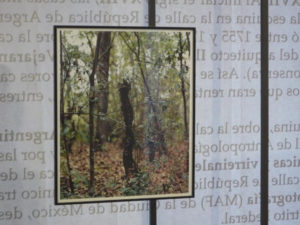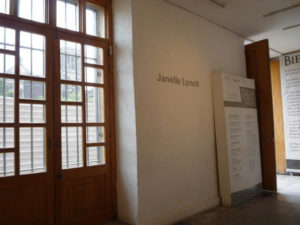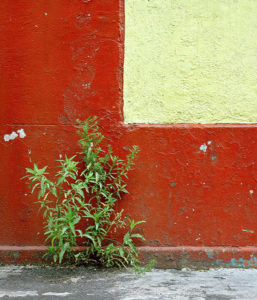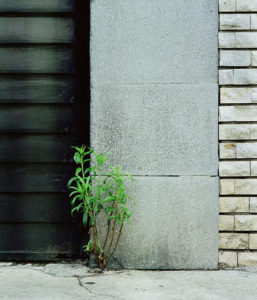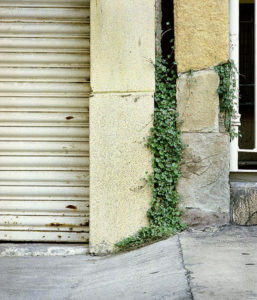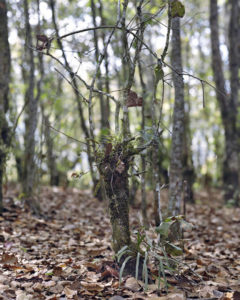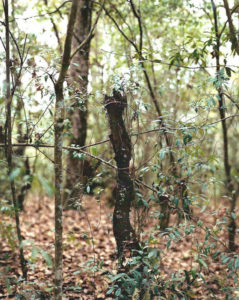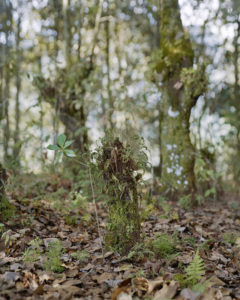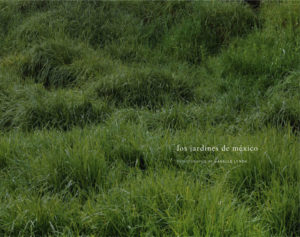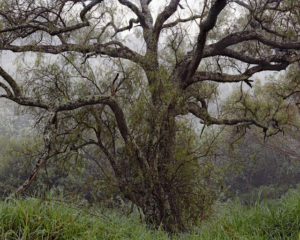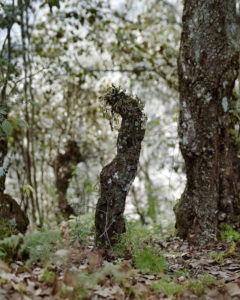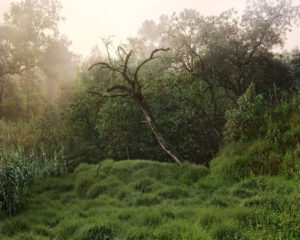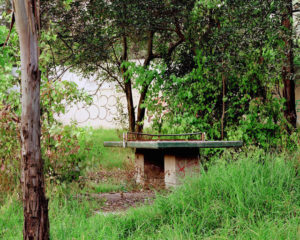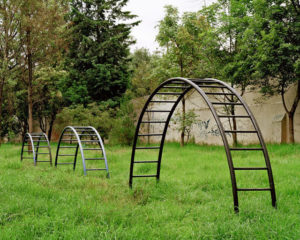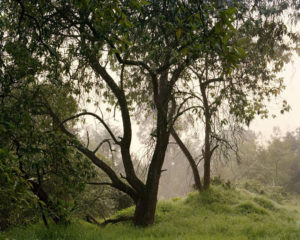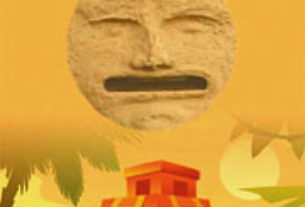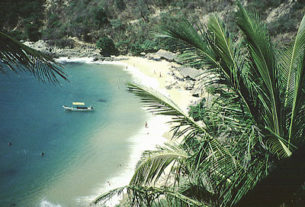New Yorker Janelle Lynch, at a relatively young age, has garnered international recognition over the last decade for her large-format photographs of urban and rural landscapes in which the human form is loath to figure.
Landscapes devoid of human activity or, if depicted at all, reminiscent of a corrosive delineation, typify Lynch’s oeuvre — and it has proven a measure of her success that her work is included at the George Eastman House Museum, the Brooklyn Museum, the Newark Museum, the Fundación Vila Casas in Barcelona and the Museo de Arte Contemporáneo in Salta, Argentina.
Lynch has just released a book of photographs called Los Jardines de México that focuses on the Mexican environment in a haunted, striking fashion.
Lynch undertook the project during her three-year tenure in Mexico. Divided into sections formed by different projects, the book begins with El Jardín de Juegos (Mexico City, 2002-2003). The images range across a children’s playground showing the remains of rusted equipment half-submerged in scrub and weeds — creating a melancholy effect.
Donde Andaba (Mexico City, 2005) explores the relationship between plant life and architecture. Akna (Chiapas, 2006) examines tree stumps in a nature reserve while reflecting upon Akna — the Mayan goddess of birth and fertility.
Finally, La Fosa Común (Mexico City, 2007), wanders the still operating, century-old common grave located within the city. The idea of ashes to ashes and dust to dust is negated by the luxuriant flora seeded by the dead.
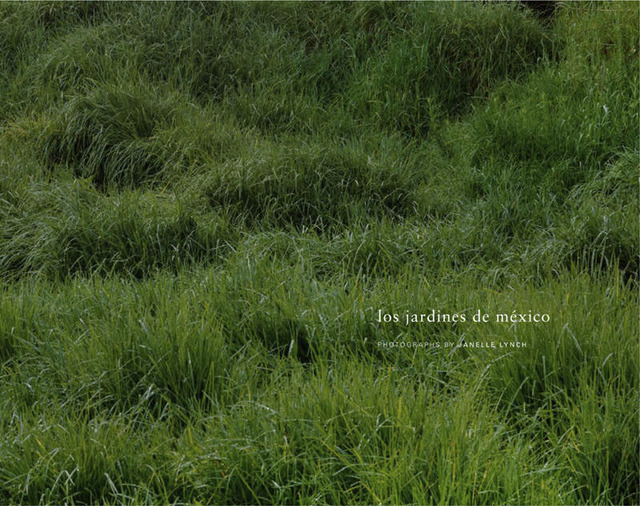
José Antonio Aldrete-Haas, a Mexico City-based architect and writer whose books include La Reconstrucción del Paraíso and José Antonio Aldrete-Haas, the Invisible in Architecture, supplied an essay for the book, as did Mario Bellatín (Salón de Belleza), a recipient of a Guggenheim Fellowship and winner of the Mexican National Prize for Literature for El Gran Vidrio (2008). spoke to Janelle on the eve of her book launch at the Museo Archivo de la Fotografía in the Centro Histórico (Guatemala 24, right behind the Cathedral and opposite the Templo Mayor) — a venue that highlights fine photography and which has showcased images from Los Jardines de México for several months.
Why did you choose to move to Mexico City for three years?
I moved to Mexico City in 2002 because I wanted to have a cross-cultural experience. Since I was very young, I have had an intense yearning to get to know the world. Even though I hadn’t yet traveled, I had a sense that it was vast and full of richness. In 2001, while traveling in Europe, my partner David and I decided that we wanted to live abroad together. A three-year professional opportunity was offered to him in Mexico.
Were there any special challenges to living in Mexico City for you or is it much the same as living in any large city, like New York?
Moving to Mexico City was, at first, an enormous challenge, primarily because I did not speak Spanish and the culture is in so many ways radically different from life in Manhattan. I was also isolated — without a community of friends/artists. Mexico isn’t an easy city to live in — traffic, contamination — everything we all know. It took almost two years to feel comfortable here — and then I didn’t want to leave.
The main theme in your work seems to be nature in repose and mankind in decay. A project such as “Common Grave” concerning Mexico City’s Panteón Civil de Dolores, the city’s largest cemetery, seems to focus on the flora that has overrun it. Can you elaborate?
The photographs in Los Jardines de México explore themes related to the life cycle and representations thereof in the urban and rural landscape, as does all of my work since 1999.
The absence of people or otherwise a suggestion of human creation returning to nature sometimes lends itself to a sort of “I Am Legend” wasteland. This is obviously a deliberate aesthetic that permeates your work — why so?
My work explores themes related to the life cycle in general, and in particular, to different aspects thereof. I have a special kinship with nature, perhaps more so than with people. That is why I instinctively chose the landscape as my genre and the vehicle through which I communicate about loss, death, regeneration and perseverance of life.
How was your experience in Chiapas and how does Akna (the Mayan goddess of birth and fertility) inform these images?
In 2005, after reading Joan Didion’s Salvador, about the Civil War in El Salvador, I became interested in how the landscape represents its history or how it holds evidence of what has happened on or around it. I wanted to look at landscape that had been the site of conflict, so I chose Chiapas (even though I was living in New York at that time). Once there, despite extensive exploration throughout the state, I did not make a connection to the landscape. Instead, I was drawn to El Huitepec, a cloud forest outside of San Cristobal de las Casas, where I was staying.
I climbed the mountain with my equipment — this was my time experience with the 8×10 camera — and made an immediate visceral link with the tree stumps that I later photographed (as portraits). I spent several weeks over the next months in the forest. The work explores themes related to regeneration and, as such, I chose the Mayan word, Akna, for the title of the series.
Were Mexican cultural authorities involved in other ways aside from providing the venue for the launch?
Bertha Cea, the Cultural Assessor at the US Embassy in Mexico City has been an important supporter of my work for years. She has made great efforts to introduce me to key figures in the art and photography world here. Her belief has been invaluable. She arranged my first meeting with the Museo Archivo de la Fotografía in 2009.
How did you enlist José Antonio Aldrete-Haas and Mario Bellatín?
I met Aldrete-Haas at the University of Barcelona’s Fine Arts department annual conference 2009. We’d both been invited to speak about our work. Since then, he has come to know me and my photographic projects. I wanted a text by someone outside the fine art photography world who could offer a different perspective and include broader references, especially to Mexican Culture. My editor at Radius Books encouraged that as well.
He was the right choice, as his essay shows. Ramón Reverté of Editorial RM recommended that I speak with Marío Bellatín about writing a text for my book. (RM is distributing the book in Mexico, Spain and Argentina.) After reading his work and meeting him and sharing my work, we agreed to collaborate.
How long does it take to produce a book of this nature and what sort of faith does a publisher need to take on this sort of project in the digital age?
Production time varies depending on many factors — most relevant being publisher, funds, artist, timeliness of subject. My first conversation with Radius Books was in June 2008. It took almost three years for the book to come out. For a small publisher, this is probably typical. There are many, many stages to the process — editing of images, design of book, selection of authors, editing of text, prepping files, getting bids from different printers, selecting papers — just to name several. I believe a publisher has to have complete faith in the project. Why else do it — digital age or not?
Los Jardines de México, Photographs by Janelle Lynch, Texts by José Antonio Aldrete-Haas and Mario Bellatín is available through Radius Books. Hardbound, 11 x 14 inches, 80 pgs, 41 color illustrations/Trade Edition: $50.00/Signed Edition: $55.00 https://radiusbooks.org/books/purchase

